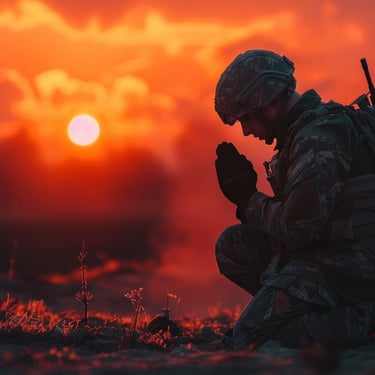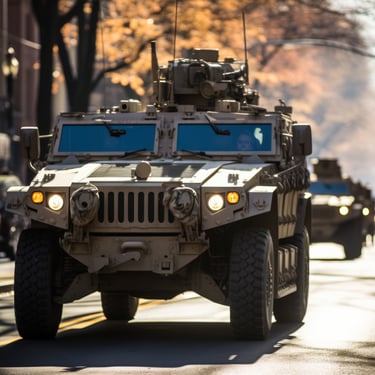War & Military Conflict
Getting ready for potential war, civil unrest, or military conflict may feel overwhelming, but taking smart, simple steps now can protect you and your loved ones. This guide explains what to do, what to buy, and how to stay safe with clear actions, real-life examples, and trusted product recommendations.




1. Create a Family Emergency Plan
Stay connected and organized, even in chaos.
What to Do:
Set a Communication Plan: Agree on how you'll reach each other if phones go down.
Pick Meeting Spots: Choose safe places inside and outside your neighborhood.
Make a Contact List: Include family, neighbors, schools, and emergency services.
Example: During the 2022 Ukraine conflict, families with plans and backup contacts found each other faster and stayed safer.
2. Build a Reliable Emergency Kit
Your kit should keep you alive for at least 72 hours.
Must-Have Supplies:
Water (1 gallon per person, per day)
Long-lasting food (cans, protein bars, freeze-dried meals)
First aid kit (bandages, medicine, tools)
Flashlight, batteries, can opener, map, multitool
Sanitation items (wipes, trash bags, hygiene products)
Warm clothes and sleeping gear
Check out our guide to the best pre-made kits: Pre-Made Disaster Preparedness Kits — Which One Is Right for You?
3. Stay Informed and Alert
Knowing what's happening helps you act faster.
Steps:
Follow trusted news and official government sites
Sign up for emergency alerts (like FEMA or local apps)
Example: Sweden mailed every household a guide called "If Crisis or War Comes," helping citizens understand what to do in emergencies.
4. Secure Your Home
Protect your space from break-ins, disasters, and unexpected events.
Steps:
Reinforce doors, locks, and windows
Install smoke and gas detectors
Choose a room with no windows as a safe zone
5. Prepare to Evacuate Fast
You may need to leave with just minutes to spare.
Steps:
Know 2+ evacuation routes in case roads are blocked
Pack a grab-and-go emergency bag (ID copies, cash, snacks, first aid)
Example: In the 2018 California wildfires, those with go-bags evacuated quickly and safely.
6. Focus on Health and Hygiene
Avoid illness and keep your body strong during emergencies.
Steps:
Stock PPE: masks, gloves, sanitizer
Keep a supply of all essential medications
7. Be Financially Ready
ATMs and digital payments might go offline.
Steps:
Keep emergency cash in small bills
Store copies of documents in a fireproof, waterproof safe
8. Build a Community Network
Don’t do this alone. Team up with others nearby.
Steps:
Connect with neighbors, local groups, and faith communities
Attend free or local training: first aid, fire safety, survival skills
Example: Norway urges its citizens to store food and water and work together in a crisis.
Start Preparing Today
Taking action now means less panic later. Whether it's organizing your family plan, building a go-bag, or joining a community group, each step counts.
Disclaimer:
This site contains affiliate links to Amazon. As an Amazon Associate, I may earn a commission from qualifying purchases. Your support helps keep the site running, with no extra charge to you.
The information provided on this website is for general informational purposes only. While we strive to ensure accuracy and reliability, the content is not intended as professional advice. Always consult with qualified professionals for specific needs or situations.
